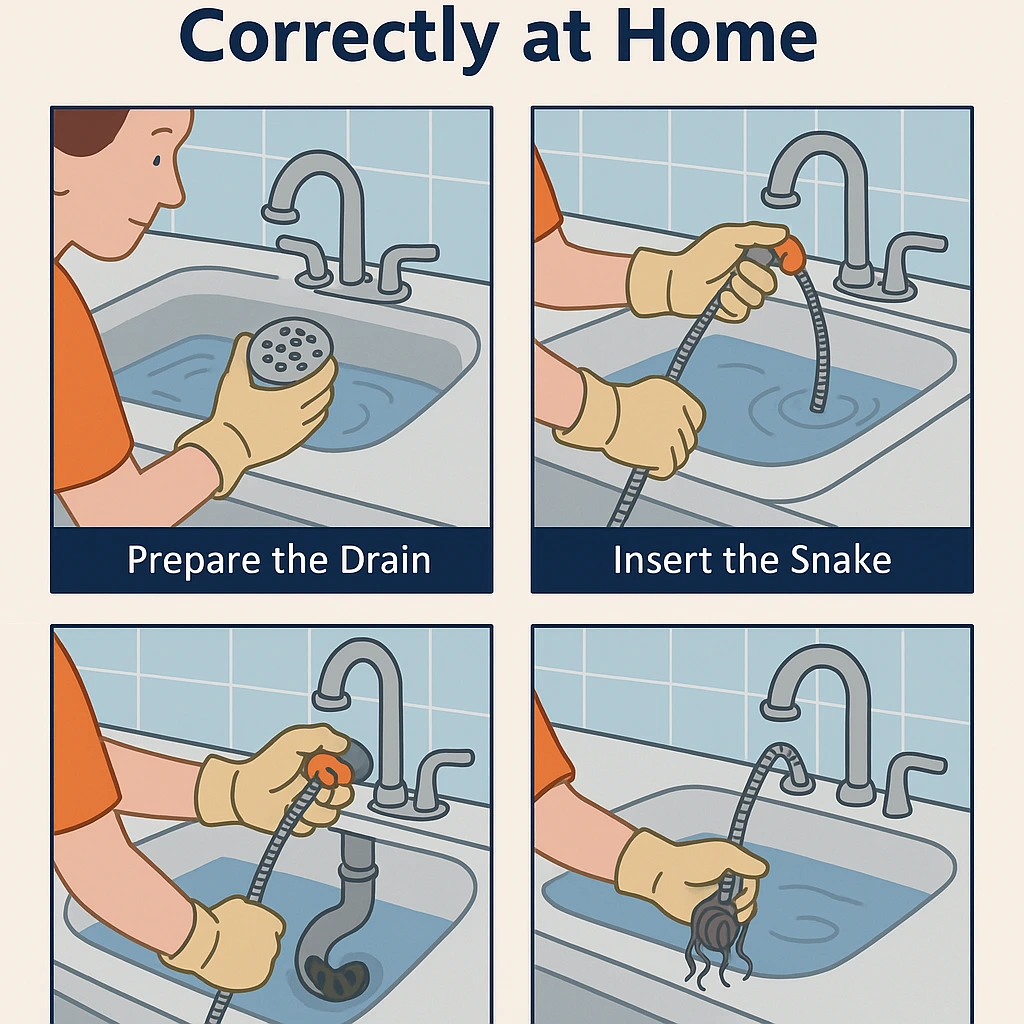How to Use a Drain Auger Correctly at Home – Step-by-Step Guide
How to use a drain auger , blocked drains are one of those household problems that always seem to happen at the worst possible time. They can range from a slow-draining sink to a completely clogged toilet. While some people turn to chemical drain cleaners, these products can damage your pipes over time and rarely solve the problem permanently.
Learning how to use a drain auger is a better, safer, and more cost-effective option. A drain auger (also called a plumbing snake) can remove stubborn blockages without using harsh chemicals. With the right technique, you can clear many clogs yourself and keep your plumbing in good shape.
This guide explains exactly how to use a drain auger, plus tips on safety, prevention, and when to call a professional like Drainage & Plumbing LTD.
What is a Drain Auger?
Before you can master how to use a drain auger, it’s important to understand what it is. A drain auger is a flexible metal cable with a corkscrew-style tip on one end and a handle on the other. You feed the cable into a clogged drain, rotate it to break up the blockage, and either push the debris through or pull it out.
There are two main types of drain augers:
- Manual drain augers (hand snakes): Perfect for smaller jobs such as sinks, bathtubs, and showers. They are lightweight, easy to store, and ideal for everyday household use.
- Electric drain augers: Designed for tougher or deeper clogs, especially in long pipes or main sewer lines. They have more power but also require more care when using.
Safety First – Before You Use a Drain Auger
When learning how to use a drain auger, safety should always come first.
- Wear gloves to protect your hands from germs and sharp debris.
- Use eye protection to prevent splashes from dirty water.
- Ventilate the room if you have previously used chemical cleaners.
- Clear the area so you can work without obstruction.
- Know your plumbing so you understand where bends and traps are located.
How to Use a Manual Drain Auger – Step-by-Step
A manual auger is straightforward to use, but proper technique makes all the difference.
- Access the drain – Remove any stoppers, strainers, or covers. If using it on a sink, you may get better results by removing the P-trap under the sink. Place a bucket underneath to catch any water.
- Insert the auger – Feed the tip of the cable into the drain slowly. Push gently until you feel resistance.
- Rotate the handle – Turn the handle clockwise while gently pushing the cable forward. This helps the auger move through bends and catch onto the clog.
- Work through the blockage – Once you feel the cable latch onto debris, keep rotating and either push through or pull the blockage out.
- Remove and clean – Carefully retract the auger, clean the cable, and flush the drain with hot water to remove any remaining debris.
How to Use an Electric Drain Auger
An electric auger works in the same way as a manual one but feeds and rotates the cable automatically. When learning how to use a drain auger of this type, it is important to:
- Read the instruction manual first.
- Use a GFCI-protected socket when working near water.
- Keep hands and clothing away from the moving cable.
- Never force the auger if it gets stuck.
Electric augers are more powerful, so they are ideal for tougher blockages. However, if you are not confident using one, it is often safer to call a professional.

Common Mistakes to Avoid
- Forcing the cable – This can damage your pipes.
- Skipping safety gear – Gloves and goggles are essential.
- Using the wrong tool – A toilet auger should only be used for toilets.
- Ignoring recurring clogs – Repeated blockages may indicate a bigger problem deeper in the system.
How to Prevent Future Blockages
Once you know how to use a drain auger, you should also focus on prevention. A few simple habits can help keep your drains clear:
- Install drain strainers to catch hair and food particles.
- Avoid pouring grease down the sink.
- Only flush toilet paper – no wipes or hygiene products.
- Once a month, flush drains with hot water and dish soap.
- Use baking soda and vinegar as a natural cleaning solution.
When to Call a Professional
Even if you know how to use a drain auger correctly, some situations require professional help. Contact Drainage & Plumbing LTD if you notice:
- Recurring blockages in the same drain.
- Several drains blocked at once.
- Foul odours from sinks or toilets.
- Water backing up into other fixtures.
- Suspected pipe damage or hidden leaks.
Drainage & Plumbing LTD serves Croydon, Sutton, Wallington, Coulsdon, Bromley, and the wider South East England area. They offer 24/7 emergency callouts, expert technicians, and the latest equipment to fix drainage issues quickly and effectively.
📞 Call: 07771 200075
📧 Email: support@drainage-plumbing.co.uk
🌐 Website: drainage-plumbing.co.uk
Drain Cleaning South East England | 24/7 Drain Unblocking Servise
Emergency Drainage London – 24/7 Fast for Blocked Drains
Final Word
Knowing how to use a drain auger can save you time, money, and stress. It’s a practical skill that can tackle most household blockages. However, if the problem keeps coming back or affects multiple drains, a professional inspection is the best solution.
For fast, reliable help, Drainage & Plumbing LTD is always ready to keep your plumbing in perfect working order.


2 responses